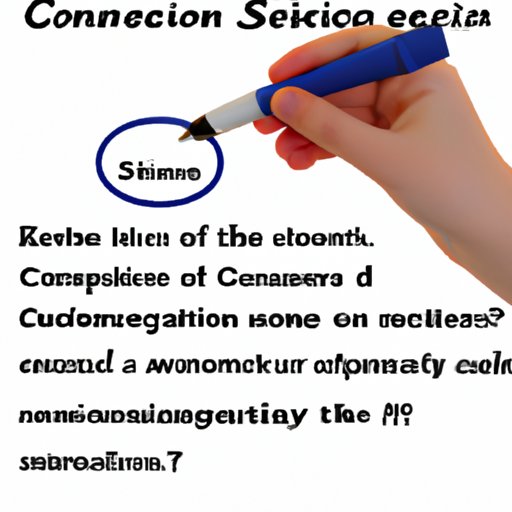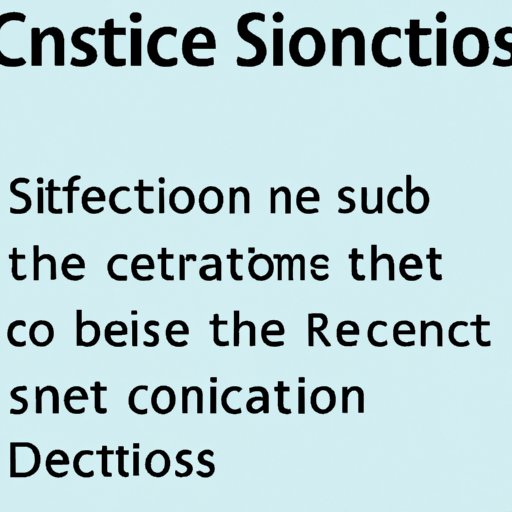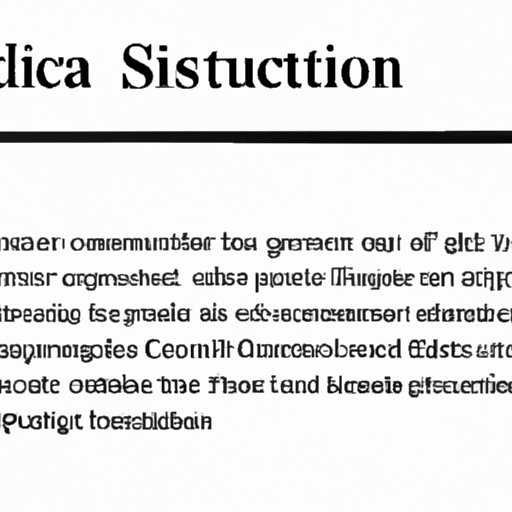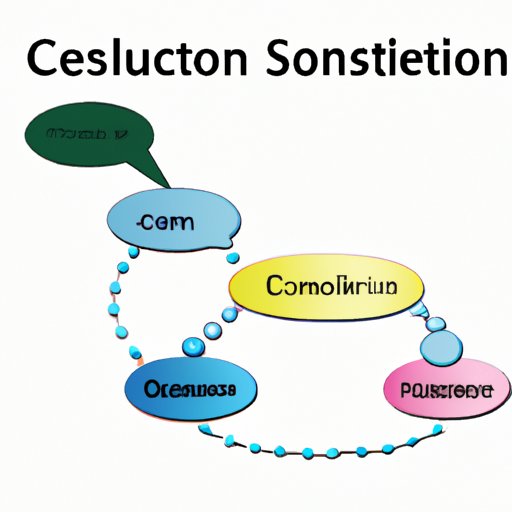Introduction
A science conclusion is the final step in the scientific process. It’s the point at which a researcher summarizes the results of their experiment or study and draws conclusions based on the data they’ve collected. The conclusion serves as a way to review the entire process and make recommendations for further research.

Exploring the Purpose of a Science Conclusion
In order to understand the purpose of a science conclusion, it’s necessary to understand the scientific process. This process involves a series of steps, including making observations, forming hypotheses, and conducting experiments or studies to test those hypotheses. Once the data has been gathered, the researcher can then draw conclusions from the results.
Drawing conclusions from data involves analyzing the results and determining whether the hypothesis was supported by the evidence. In some cases, the researcher may find that the data does not support the hypothesis. In other cases, the researcher may find that the data supports the hypothesis but only partially. Regardless of the outcome, the researcher must draw conclusions based on the data.

Writing a Science Conclusion: Tips and Strategies
Once the data has been gathered and analyzed, the researcher can begin to write a science conclusion. There are several tips and strategies that can help ensure that the conclusion is effective.
The first step is to analyze the results. This involves taking the time to review all of the data that was collected and determining whether the hypothesis was supported or not. The researcher should also consider any alternative explanations that could explain the results.
Once the results have been analyzed, the researcher should explain their findings. This involves discussing the implications of the results and outlining the key points of the experiment or study. The researcher should also offer suggestions for further research if applicable.
Crafting an Effective Science Conclusion
When crafting an effective science conclusion, there are several key elements that should be included. First, the researcher should summarize the main points of the experiment or study. This includes outlining the hypothesis, explaining the results, and providing any relevant context.
Next, the researcher should clarify their interpretation of the results. This involves discussing any implications of the data and offering any personal thoughts or insights. Finally, the researcher should offer suggestions for further research. This can include ideas for additional experiments or studies or recommendations for future directions.
What is the Purpose of a Science Conclusion?
The purpose of a science conclusion is twofold. First, it provides a summary of the results of the experiment or study. Second, it makes recommendations for further research. By summarizing the results and making recommendations, the researcher can provide valuable insight into the scientific process.
A science conclusion should also establish conclusions. This involves drawing connections between the data and the hypothesis, as well as any implications of the results. By establishing these conclusions, the researcher can demonstrate the value of their work and provide guidance for future research.

A Guide to Writing a Science Conclusion
Writing a science conclusion can seem daunting, but it doesn’t have to be. With the right approach, anyone can craft an effective science conclusion. Here are the steps to follow when writing a science conclusion:
- Identify the problem or question being investigated
- Gather data through observation, experimentation, or study
- Draw conclusions from the data
- Discuss any implications of the results
- Make recommendations for further research
- Cite sources used in the experiment or study
By following these steps, the researcher can create an effective science conclusion that will provide valuable insight into their experiment or study.
Conclusion
A science conclusion is an important part of the scientific process. It serves as a way to review the entire process and make recommendations for further research. In order to craft an effective science conclusion, the researcher must identify the problem, gather data, draw conclusions, discuss implications, and make recommendations. By following these steps, the researcher can create an effective science conclusion that will provide valuable insight into their experiment or study.
As Albert Einstein famously said, “If we knew what it was we were doing, it would not be called research, would it?” A science conclusion helps to bridge the gap between research and understanding by summarizing the results of the experiment or study and making recommendations for further research.
(Note: Is this article not meeting your expectations? Do you have knowledge or insights to share? Unlock new opportunities and expand your reach by joining our authors team. Click Registration to join us and share your expertise with our readers.)
